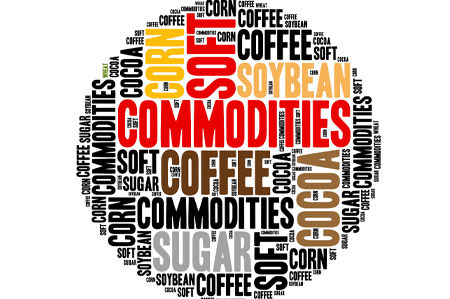Sell-Off in Ags Has Gone Far Enough, According to Broker Forecasts
Category: Miscellaneous
 (Agrimoney) – The sell-off in agricultural commodities, which took them back to levels last seen in the global financial crisis, has gone far enough, brokers believe, with forecasts for price recoveries across the board.
(Agrimoney) – The sell-off in agricultural commodities, which took them back to levels last seen in the global financial crisis, has gone far enough, brokers believe, with forecasts for price recoveries across the board.
Analysts have, over the last month, downgraded price forecast for many major crop futures contracts, according to tracking by FocusEconomics, drawn from price outlooks from the likes of Capital Economics, Commerzbank and Itau BBA.
The consensus estimate for the average Chicago wheat futures, for instance, in the first three months of 2018 was cut by $0.15 a bushel to $4.74 a bushel.
For New York traded raw sugar, the forecast for the average price was cut by 0.4 cents a pound to 15.7 cents a pound.
‘High demand outlook’
However, the consensus forecasts for all contracts, in terms of average values in the first three months of 2018, remain above those that markets are factoring in.
Indeed, an agricultural prices index calculated by FocusEconomics from the forecasts is seen recovering to show a rise of 5.0% year on year, with a further gain of 4.1% expected during 2018.
The group, while noting “surging supply” of many farm products, also flagged that “the demand outlook for many agricultural commodities it high”.
The analysis will not include any price estimate changes made after the US Department of Agriculture on Tuesday, in its monthly Wasde crop report, made unexpected upgrades to hopes for domestic yields of corn and soybean yields.
Futures in both crops have pared losses after initial price tumbles.
‘Prices should tick upwards’
In fact, analysts had forecast corn futures averaging $4.13 a bushel in the first three months of next year, well above the price of $3.63 a bushel at which Chicago’s March 2018 contract was trading at on Wednesday.
“Corn prices should tick upwards as countries including China see production being swapped for more profitable crop alternatives,” FocusEconomics said, flagging support too to values from raised EU import prospects, “as hot and dry weather conditions in the region’s south eastern countries weaken the bloc’s corn production”.
For soybeans, forecast price gains were less marked, with the consensus estimate of futures averaging $9.82 a bushel early next year allowing some upside from the $9.73 ½ a bushel being priced in to Chicago’s March lot.
Similarly in wheat, commentators’ forecasts allow for some $0.10-a-bushel gains from the levels that Chicago’s March contract is currently valued at.
“Prices are likely to rise from their current level,” the analysis group said, noting the prospect of weaker world output in 2017-18, “mainly as a result of a smaller planted area in the US and a drop in Australian wheat production”.
Softs to gain?
Among soft commodities, the forecast for New York-traded arabica coffee futures averaging 145 cents a pound in the first quarter of 2018 also implied limited scope for gains, with March futures valued on Wednesday at 139.45 cents a pound, lifted by revived concerns over Brazilian dryness.
“Prices are expected to climb slightly as global supply is exhausted ahead of next year’s harvest,” FocusEconomics said.
However, sharper gains were seen in raw sugar, with the consensus estimate for early-2018 values well above the 14.60 cents a pound at which March futures were trading at.
“Prices should drift up slightly going forward, as low prices encourage some producers to divert sugarcane to ethanol production rather than sugar.”
‘Constrained supply’
In cocoa, meanwhile, analysts stuck by a forecast for values averaging $2,062 a tonne which was also comfortably ahead of the futures curve, with New York’s March contract priced at $1,972 a tonne.
And in cotton too, prices are seen rising, to average 72.8 cents a pound in the first three months of next year, above the March contract price of 68.18 cents a pound.
“A constrained supply and an anticipated rise in global cotton consumption should keep prices on an upward trend,” FocusEconomics said, although the USDA in fact loosened its own forecast for the world cotton balance sheet next year, putting a 3m-bale stocks rebuild on the cards.
‘Limited downside’
The forecast for agricultural price rises ahead tallies with that of Bloomberg Commodity Index, which has flagged the potential boost to prices from demand factors encouraged by weak prices, and a drop in the dollar, which lifts the affordability of dollar-denominated assets.
“Nearly matching the financial crisis low at the end of August, the Bloomberg Agriculture Total Return Subindex has limited downside,” said Mike McGlone senior analyst at Bcom.
“If the dollar’s strength is reversing, the same shouldn’t be far behind for the bear market in grains.”




